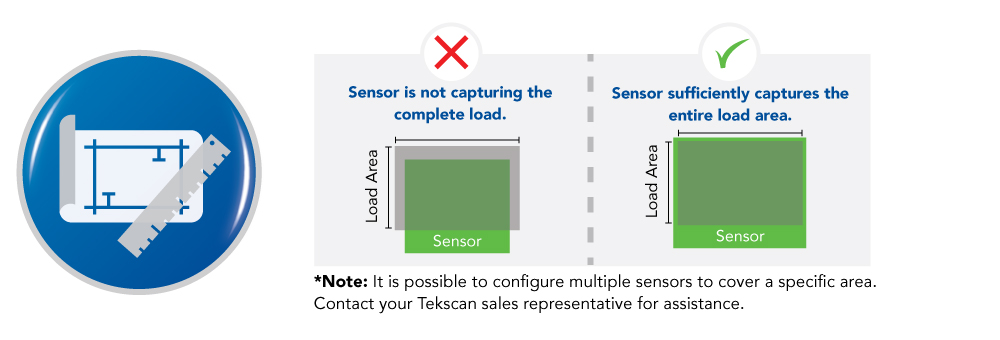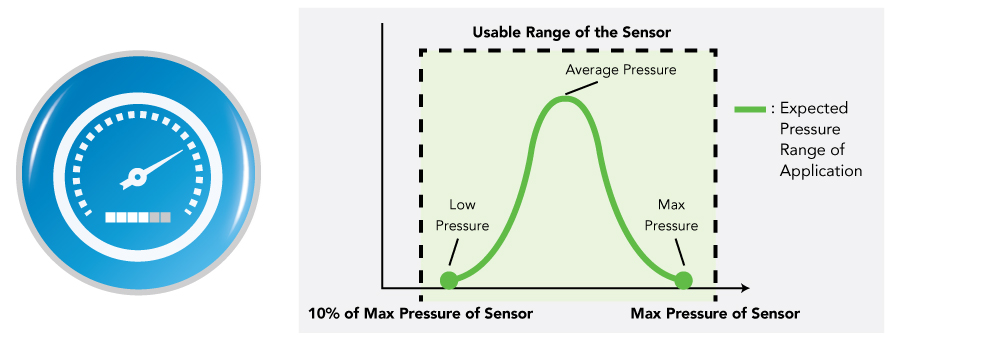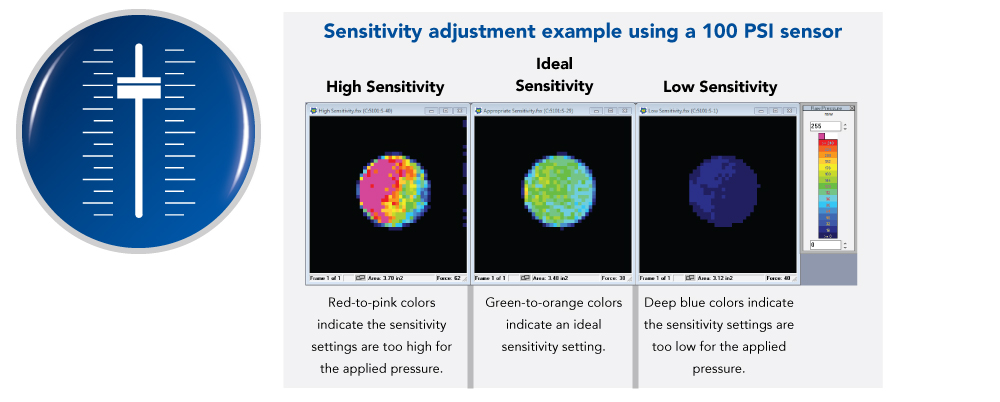Five Factors to Help You Select a Pressure Mapping Sensor
Searching through our over 200 standard I-Scan™ pressure mapping sensors may seem overwhelming. However, the process really boils down to five simple but important application variables.
#1: Sensor Size & Shape

It’s important to ensure that your sensor selection will cover the entire area of the load you wish to capture. Keep in mind that multiple sensors can be used to cover large or abnormally shaped areas. Sensors can also be trimmed, or specified with holes or gaps in the sensing area to help you maximize your sensing process. We highly recommend contacting your Tekscan sales representative for any assistance modifying your sensor.
#2: Pressure Range

Take it from us -- application comes with some surprises. You may have an expected pressure range for the application in mind, but during the testing phase, you may find peak pressures that are significantly higher than anticipated. To account for these peak pressures, your sensor’s measurement range should be between 10%-to-100% of the maximum expected range of the application.
#3: Sensing Element Density

You may have seen this short Anatomy of a Pressure Mapping Sensor video explaining how pressure mapping sensors are made. To summarize, all pressure mapping sensors are comprised of rows and columns of semi conductive material, with a pressure-sensitive layer administered in between. Each intersection of this conductive material is called a Sensel – an individual sensing unit within the matrix. As pressure is applied, the individual sensels experience a change in resistance, which is transmitted through the scanning electronics and read as a digital signal on the I-Scan software.
Tekscan can manufacturer sensors with high (up to 248 sensels/cm2) and low density capabilities. As shown above, a higher density will provide more detail to the pressure image. However, sensel density does affect the ability to use different pressure ranges. For instance, lower pressure ranges are best suited for a larger sensel density.
#4: Operating Environment

If you anticipate your sensor will be used in a high temperature operating environment (such as a laminating machine or certain automotive applications), you should consider some of our high temperature options – indicated by an “HT” on the sensor list. Application speed and wireless capabilities may also play in a role in your choice of sensor.
**Note: There are limitations with high temperature sensors, in terms of pressure range, size, and resolution. Contact your Tekscan sales representative for assistance.
#5: Adjustable Sensitivity

The pressure range of every pressure mapping sensor can be adjusted using the Sensitivity Adjustment feature within the I-Scan software. In fact, a single sensor can capture x 3 to 1/7 of the sensor’s listed pressure rating. This allows the user to capture a much wider range of max pressures. This blog post explains the benefits of adjustable sensitivity, including a short video explaining how to adjust sensitivity within the I-Scan software.
Need more assistance? We're here to help.
Our Tekscan sales representatives are standing by to help coach you through the sensor selection process.
